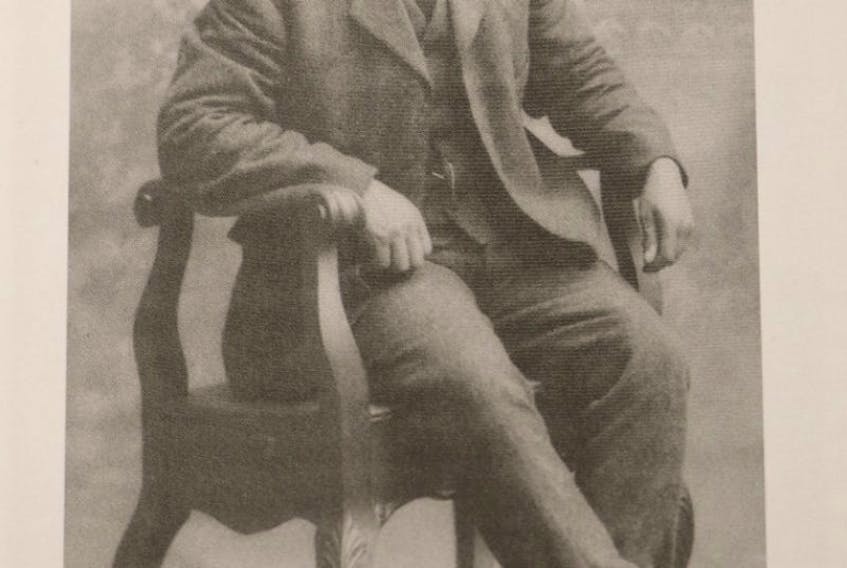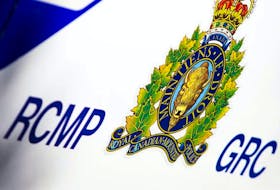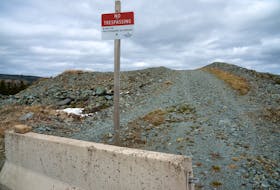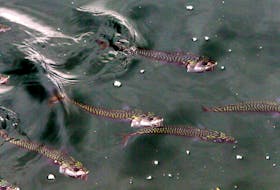Janes, originally from the Glovertown area, had been shot by an Inuit leader on Baffin Island after Janes had reportedly threatened the Inuit and their valuable sled dogs.
While in Glovertown, Harper learned of a family with the last name of Janes and went to their house to see if they could tell him anything about Robert Janes.
“A young fellow answered the door, maybe he was 20 or early 20s, and he asked me what I wanted,” Harper said. “After I told him, he just kind of blew me off and said, ‘No, we don’t know anything about that.’ And then this voice came from inside the house and it was this elderly woman. She called out, ‘Who is it?’
“The young fellow said, ‘It’s just some mainlander Granny, asking questions about somebody with the same last name as us who was killed by Eskimos a long time ago. We don’t know anything about that, do we?’”
There was a pause and then the woman, Mrs. Ambrose Janes, said, “Bring the man in. He’s asking about your great-uncle Bob.”
The woman, who was in her 90s at the time, was the sister-in-law of Robert Janes. She told Harper all she could about Robert Janes and that the family believed he was set up for murder by the captain of a ship backed by a rival trading company.
“It was very interesting talking to her,” Harper said. “And her grandson sat there and was in awe of this story because he had never heard it before.”
Harper’s book “Thou Shalt Do No Murder — Inuit, Injustice and the Canadian Arctic” was recently released by Nunavut Arctic College Media.
For Harper, it’s been a book 40 years in the making.
Harper is originally from New Market, Ont., but he moved to the Arctic as a teacher in the 1960s and lived there, and in Greenland, for the next 50 years. In addition to teaching, he has worked as a historian, linguist and businessman.
Harper learned to speak Inuktitut early on by living in small, isolated Inuit communities. The interviews he conducted with Inuit elders were done in Inuktitut.
“It’s made life much richer for me to be able to speak Inuktitut,” Harper said. “My interviews were not formal interviews, they were visits. I’d go to somebody’s house — and Inuit love to drink tea — and we’d have tea and talk. The Inuit knew I was interested in stories, and particularly in this story, and they were happy to share their knowledge.”

The book details the events surrounding the 1920 murder and the subsequent “show trial” in 1923 of Inuit leader Nuqallaq, the shooter, and two others who were with him at the time.
The story also delves deep into the fur trade in the High Arctic, the rivalries among fur traders and their interactions with the Inuit. It also touches on Canadian sovereignty and the eventual loss of the Inuit traditional way of life.
“The show trial that took place in Pond Inlet in 1923 marked a collision of two cultures with vastly different conceptions of justice and conflict resolution,” Harper states in the book. “It hastened the end of the Inuit traditional way of life and ushered in an era in which Inuit autonomy was supplanted by dependence on traders and police, and later missionaries.”
Harper, whose wife Kathleen Lippa is from St. John’s, also did extensive archival research for the book — including obtaining access to the old RCMP files.
“What drew me to this story was it is a fascinating story, and I hadn’t heard it before and so I assumed most other people hadn’t heard it before,” Harper said.
“I was very fortunate to meet very early in my time in Arctic Bay a wonderful, old man named Jimmy Etuk. He had a marvelous understanding of history, and not just the Inuit’s own history, but cross-cultural history. He understood in the early years, at the time Janes was there, what white people were doing in the area. And he understood their motives and their needs and desires, and so it was rather unusual for a man of his age in that he was telling a cross-cultural story, rather than just an Inuit story.”
In the book’s introduction, Harper comes to a conclusion that Janes’ death should not be classified as a murder, but as a killing.
“They are not the same,” he said. “There is something about that word murder that kind of implies, automatically, the accused is a bad person. These pre-conceived notions of culpability and blame, and automatically our mind goes to the possibility of punishment. I don’t think those things are relevant in considering what Nuqallaq did with Janes.
“I have a lot of sympathy for Janes. He was a man abandoned by his backer and he was probably quite deranged by the time he was trying to make his escape by dogsled and by the time the Inuit killed him. So circumstances drove him mad, more or less, and he did some very bad things in that state of mind.
“But Nuqallaq had no choice in killing him. He was the camp leader. There where no authorities to turn him over to or to complain to, and there were no police to discipline or charge him, so the justice that was meted out by Nuqallaq and the other two Inuit was traditional, typical Inuit justice where you warn the person a number of times, give them as many chances as the survival of your camp can afford, but ultimately if the person keeps threatening you, your camp mates, the dogs, you are going to have to do something with him. So Nuqallaq did this, reluctantly.”
Following the murder the Government of Canada sent an RCMP officer to investigate. A trial followed that, Harper claims, was used by Ottawa to fight off a perceived threat to Canadian sovereignty of the North by other countries.
“The Canadian government convinced themselves there was a threat to Canadian sovereignty,” Harper said. “A trial would show that the people who lived there, the Inuit, were subject to Canadian law. The trial changed the course of Inuit society and put them under external authority.”
Harper said he believes the book would be of interest to readers in Newfoundland because of the story’s strong connections to the province. He said it’s a story he always knew he had to write about.
“If you consider yourself a researcher and a storyteller, and you come across raw material that good, you have to do it justice,” he said. “You just can’t ignore a story that someone tells that is that good.”









